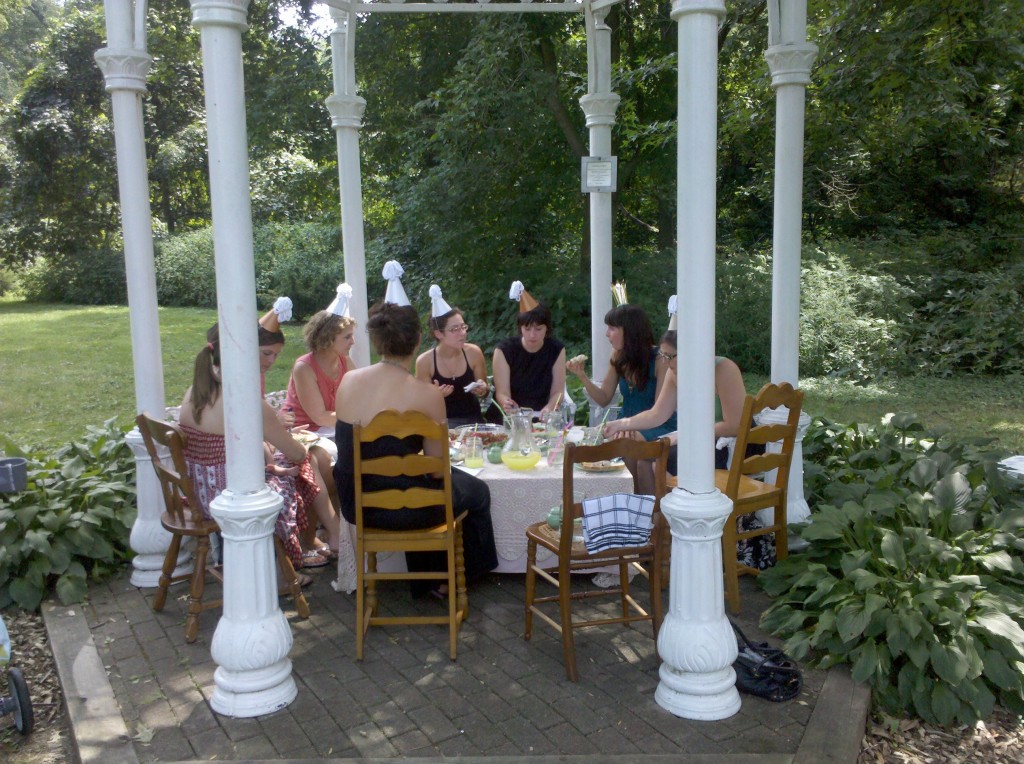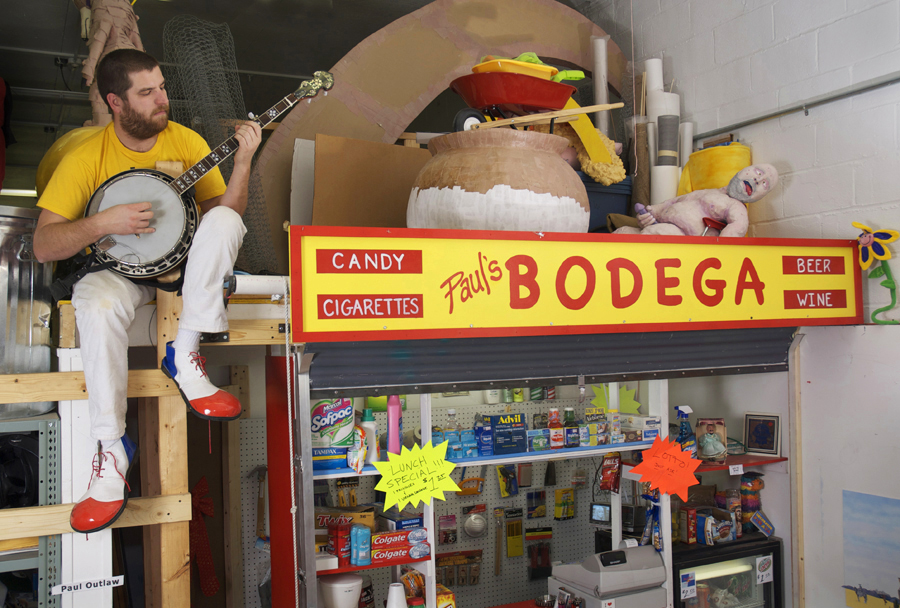Red waterfalls hang frozen from tarnished candelabra arms above hardened wax puddles joined permanently to a floral cloth. Dew collects on the open mouths of emptied wine bottles as cool morning air washes over the garden table and chairs occupied only hours before. Recently, two close friends and I have been getting together over dinner to talk about art and enjoy each other’s company. Every one of our meetings has been intimately set with just the three of us alone in a garden. On top of candles and wine adding to the atmosphere, the dinners were timed almost magically to correspond to the sunset, making each encounter seem unique and magical. On the morning after these get-togethers, my mind often wanders, ruminating on the conversations of the previous evening. This time I started to think about craft even before the meal ended. Not just craft as it relates to weaving and carving, but a broader definition that can include crafting an idea or situation. This summer, each setting of the table and planning of the menu was done with intention. These experiences were crafted not only to feed our appetites, but also to nurture our comfort, friendship, and conversations.
Since moving to Cranbrook Academy of Art, relationships created in the name of art have been floating around in my periphery. Several critiques and art events I attended this last year were centered on objects and scenarios aimed at bringing people together. Just last week, two Cranbrook alumni, Paul Outlaw and Jennifer Catron, were written up in the New York Times for their newest artistic endeavor—a mobile fish fry truck that has made appearances in Brooklyn teaching city residents how to eat southern-style crawfish. The project creates a specific experience, combining a little of Catron and Outlaw’s spectacle with the weirdly exclusive feeling of being served out of the back of a truck. This seems to have the purpose of helping participants to bond. With the same quirky flair, Outlaw also ran a bar called Exclusions and, a few years earlier, a bodega in his studio that served as a space for students and faculty to spend their bucks and get to know each other during his time at Cranbrook.

Party at Marcel Wanders' studio. Photo courtesy of Kristina Gerig.
While Outlaw and Catron’s fish fry project is made under the auspices of art, I wonder if it is possible to craft a moment and therefore craft a relationship. This summer, one of my friends and peers, Kristina Gerig, spent time in Amsterdam working in the studio of Marcel Wanders, a Dutch designer who recently had a solo exhibition at the Philadelphia Museum of Art. One of Kristina’s duties as part of Wanders’ interior design team was to organize meals, celebrations, and special occasions for the studio. When speaking of these events, she said they were “most definitely crafted experiences,” comparing her work to stagecraft, where the designers focus on the environment instead of the actors. Her goal in crafting these experiences was to provide an intimate, celebratory, and magical atmosphere for each guest. For example, one of the events she hosted over the summer was a celebration of femininity and love for a friend who was getting married. For the party, the bride-to-be’s female friends and family members gathered in a small garden for this un-traditional bachelorette party. The food and decorations were not the only important ingredients for creating this magical place and time. Even the guests themselves played a role in making this moment special. In her personal design work, Kristina creates objects that tell stories through participation. She looks for common elements from across generations and cultures to achieve a feeling of fantasy in everyday life — the same feeling she worked to create in each of the events she crafted over the summer months.

Brunch for Kate. Photo courtesy of Kristina Gerig.
With so many intimate social experiences like these (Outlaw and Canton’s in Brooklyn, Kristina Gerig’s in Amsterdam, and mine in Detroit) happening all over the world, can they be considered art? Is any planned event art? Almost anyone can plan a birthday party to be extra fun, or a dinner to be especially memorable by paying close attention to the details. The difference seems to be in the intention behind each experience. In her 2004 October article, “Antagonism and Relational Aesthetics,” Claire Bishop responds to Nicolas Bourriaud’s book Relational Aesthetics, writing about the way a work associated with Bourriaud’s buzzword might be assessed. Because relational aesthetics works tend to not embody a physical medium (whereas a work like painting does) Bishop believes, like Bourriaud, that these works should be read according to the relationships they enable, rather than any physicality they may have. She sees the interactivity in relational work as “superior to optical contemplation of an object.” So in Bishop’s opinion, relationships and experiences are the mediums to be molded, rather than the physical spaces that create them.
It is still the morning after the dinner my friends and I had together, and I am still thinking about craft. I recently visited the Renwick Gallery in Washington, D.C. and while I was there, I saw a lot of craft and some astonishingly well-crafted works of art. Like all crafts, a moment can be made by anyone, honed into a beautiful experience by a master craftsman, or molded into a work of art that takes on a greater meaning through the intentions of an artist wanting to create something larger than the common experience.





